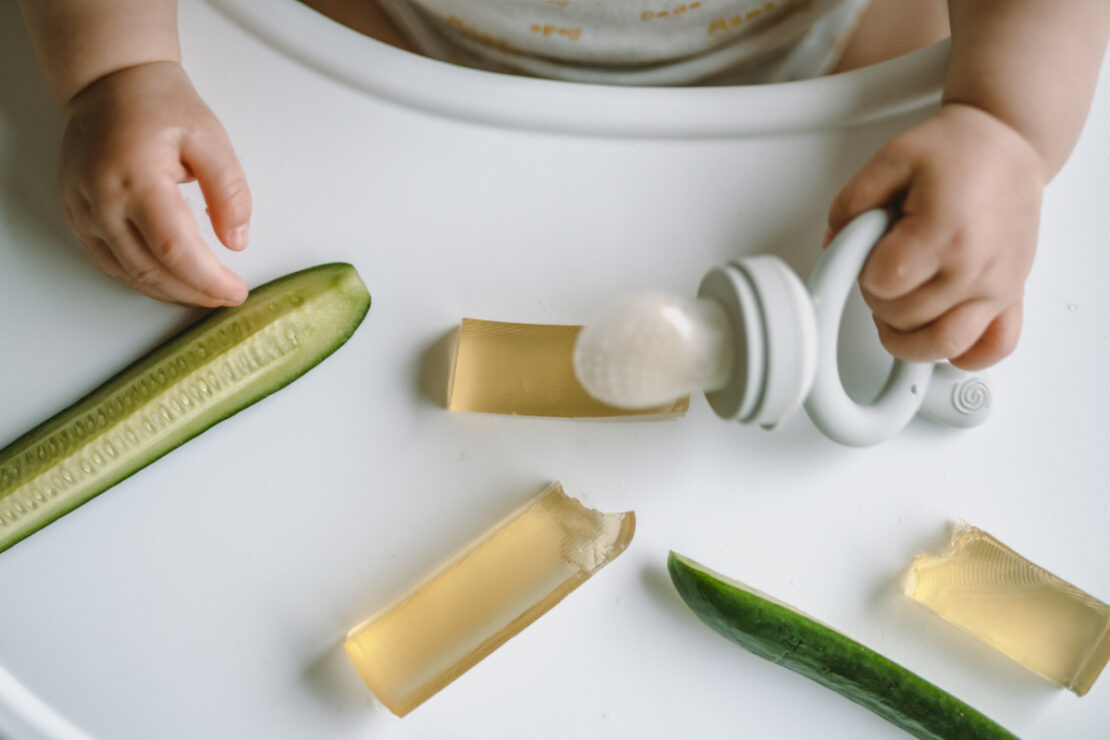
DIY Chamomile Teething Gummies: Herbal Support for Teething Babies
Sleepless nights are a part of parenthood, particularly during teething. Some babies are quite distressed by this process, and the associated pain can leave them feeling uncomfortable and unsettled night and day.
The time frame of when the first teeth erupt varies from child to child. For example, one child may already be teething at 3 months, while another baby’s first tooth may come in at 10 months. As different as the timing of the tooth is, so is each child’s individual sensitivity to pain.
In this article, you will find some natural approaches to soothe the discomfort of teething, as well as an herb and recipe that can be very helpful during this phase.

Signs That Your Baby is Teething
As soon as teething begins, some children have increased salivation and drool a lot. Often, they are also easily irritable and fussy. Some children even develop a rash and mild fever. During these phases, they like to bite and chew on their hands, toys, or fabric. Chewing relieves the pressure pain in the palate and gums. Teething rings made of food-grade silicone or wood can provide useful support. Just remember that anything you give your baby to chew on must not be a choking hazard, and it’s best to give your baby something only when you can supervise it.
Natural Approaches for Teething: Three C’s
Cooling
Aches and pains are natural during teething and can be eased by cooling.
Cold and frozen fruit or vegetables to chew on are an easy helper if you’re practicing baby-led-weaning. Other great options are frozen liquids such as breastmilk, formula, coconut yogurt, or bone broth, which can be put into a silicone feeder.
Closeness
Overall, physical comfort can also be very beneficial when the baby is unsettled. You can be there to offer love and emotional support. Extra cuddles, a gentle foot massage, and babywearing can provide a lot of relief. If you are nursing, doing so more frequently is often a good way to give your baby some extra comfort, and teething time is no exception. This can also instill a sense of trust in the baby that they can rely on others to help get them through a difficult time.
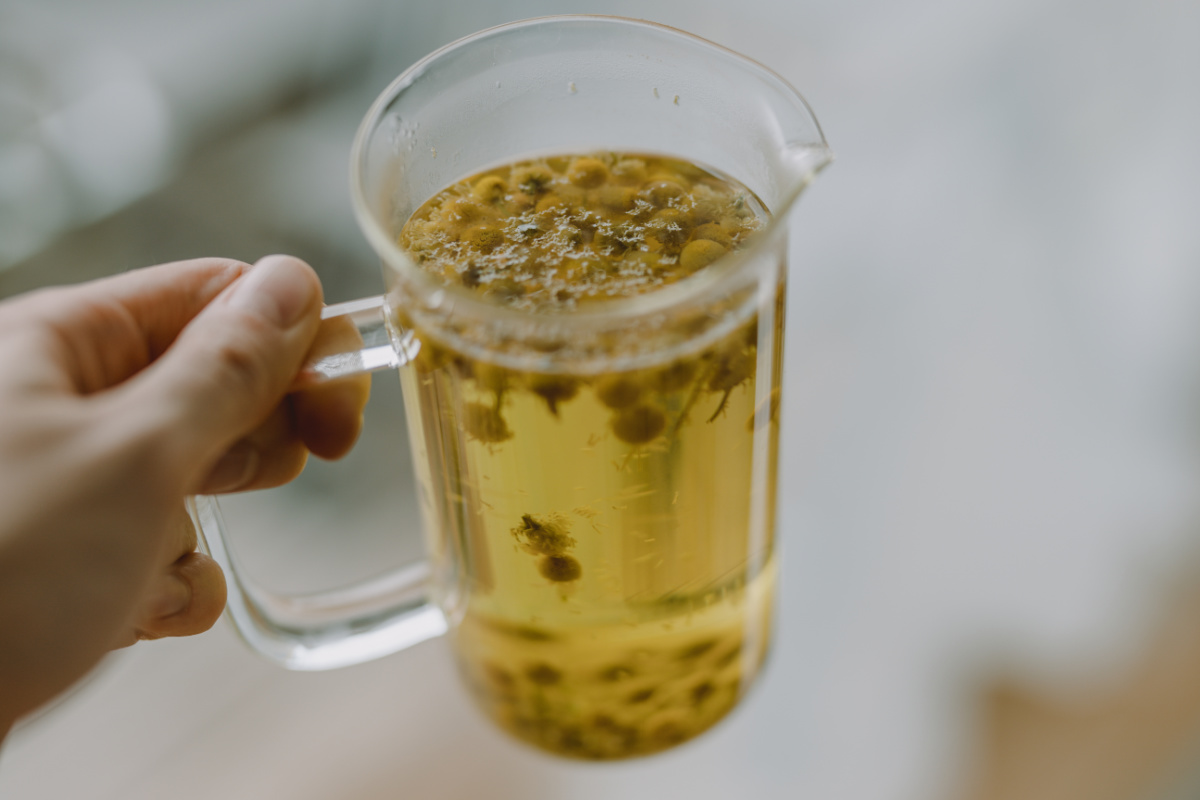
Chamomile (Matricaria chamomilla) Tea
Chamomile tea has a pleasant taste and is safe for babies and children. Many modern herbalists describe German chamomile as a cooling herb (Easley & Horne, 2016).
Furthermore, as a nervine, chamomile is a great choice for easing stress and tension; it promotes restful sleep in unsettled babies, which can be very helpful during interrupted sleep phases while teething (Hoffmann, 2003).
Since chamomile is cooling, reduces pain and inflammation, and helps to calm the nerves, it’s a fantastic herb to implement in different ways to help with the pain and discomfort of teething.
Chamomile tea can be offered in small amounts as an extra drink (not by displacing breastmilk or formula if under 12 months) and can also be used to wet a washcloth which can be placed in the freezer for the baby to chew on once it’s firm and cold. Other great ways to use this herb include tincture or glycerite, homeopathic liquid drops, or in the form of the gummy recipe below for a lovely little healthy snack for your baby.
The other ingredient in these gummies, gelatin, is an incredible super food – it boosts immunity, aids in repairing the digestive tract, supports skin health, reduces inflammation, balances hormones, and strengthens teeth (McCabe & Mendes 2020)!
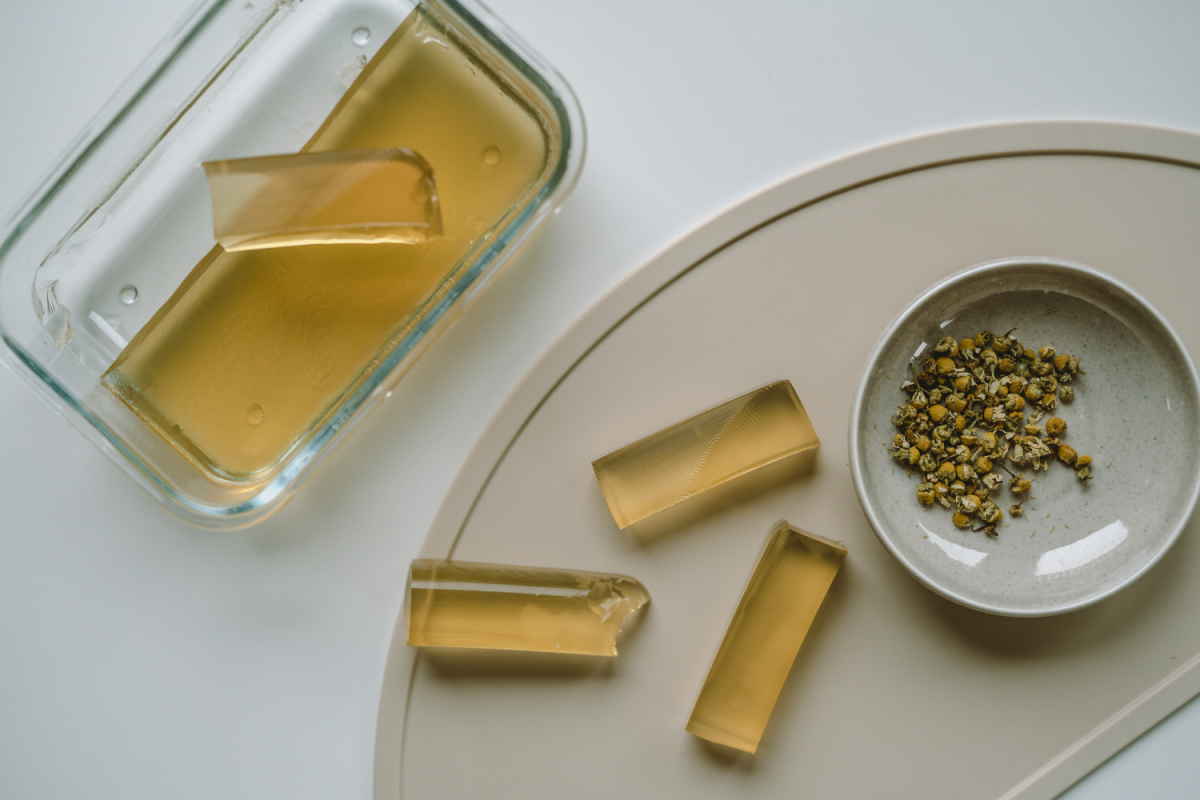
Adapted from midwife and baby nutritionist Luka McCabe (@boobtofood)
Chamomile is a gentle but powerful herb with some wonderful anti-inflammatory properties. Therefore this is not only a perfect teething treat for your little one, but also an overall health booster that offers several benefits.
400 milliliters filtered waterChamomile Teething Gummies
2 tablespoons chamomile (Matricaria chamomilla) flowers
3 tablespoons organic grass-fed gelatin
Safety: Babies are often ready for solids at around 6 months. This is when most babies meet the signs of readiness, such as being able to sit up and having head and neck control. These are important indicators that the baby’s delicate and intricate digestive system is ready to handle foods other than breastmilk and formula, and that they are able to hold and eat a gummy slice safely.
*These gummies are very soft and as baby sucks on them, they will dissolve in the mouth. They can be made even softer with less gelatin. Those who are practicing baby-led weaning may be familiar with using finger-shaped slices, however, cut these to the size that are appropriate for your baby’s stage as you know them best. Here is a resource on feeding during baby-led weaning: https://solidstarts.com/starting-solids/safety/safe-food-sizes-shapes-for-babies/ Don’t hesitate to ask your pediatrician about determining readiness and food introduction if you need support.
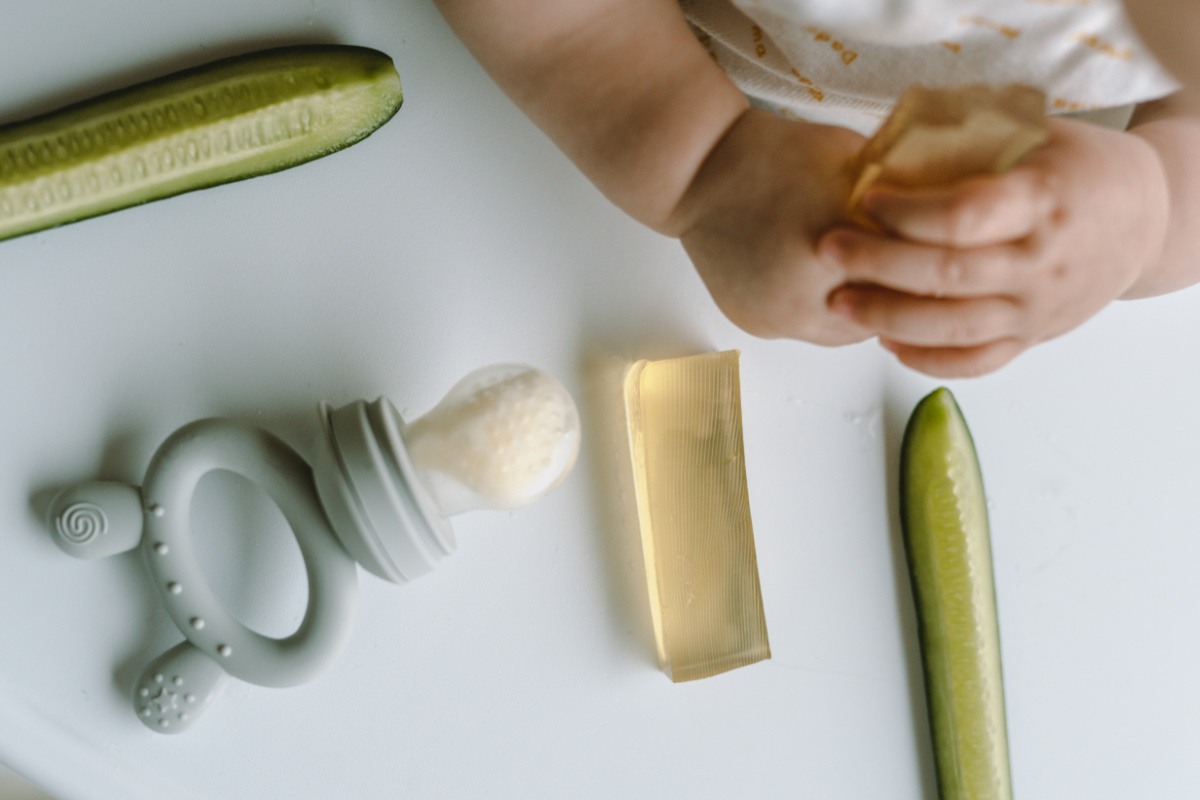
In Closing,
The teething phase is not always easy for babies and their caregivers. Nevertheless, fortunately, it is temporary and natural aids can take the edge off the process. With these homemade chamomile gummies, you can do something good for the baby in many ways!
Above all, remember that the process of teething is a natural part of a baby’s development, and the pain and discomfort that accompany it are a part of this human life.
Lots of love is always the best teething relief and just what your baby needs to grow from this experience.
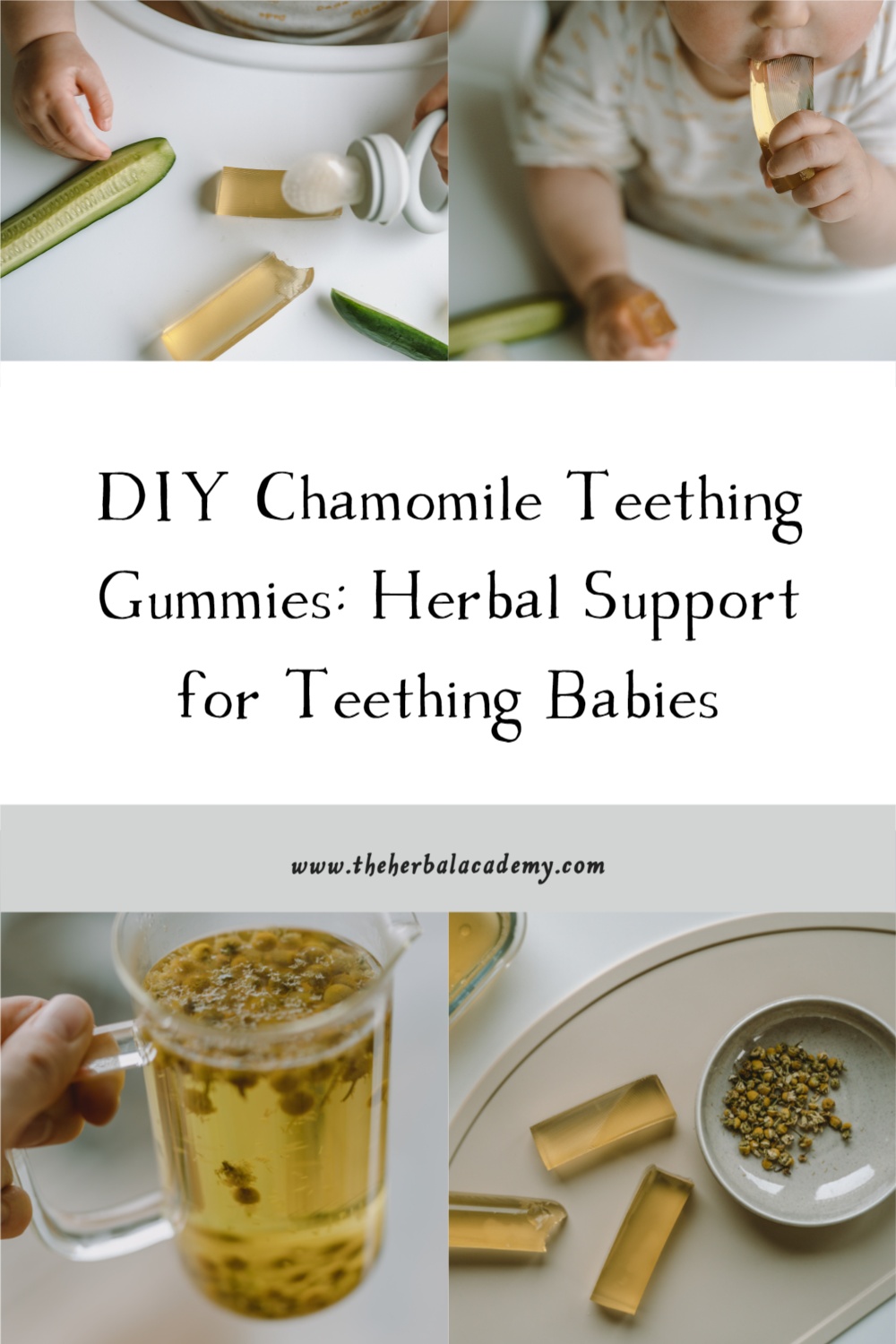
REFERENCES
Easley, T., & Horne, S. (2016). The modern herbal dispensatory: A medicine-making guide. North Atlantic Books.
Hoffmann, D. (2003). Medical herbalism: The science and practice of herbal medicine. Healing Arts Press.
McCabe, L., & Mendes, C. (2020). Milk to meals: A guide to inspire, inform, nourish and nurture you and your baby’s journey to food. McPherson’s Printing.








